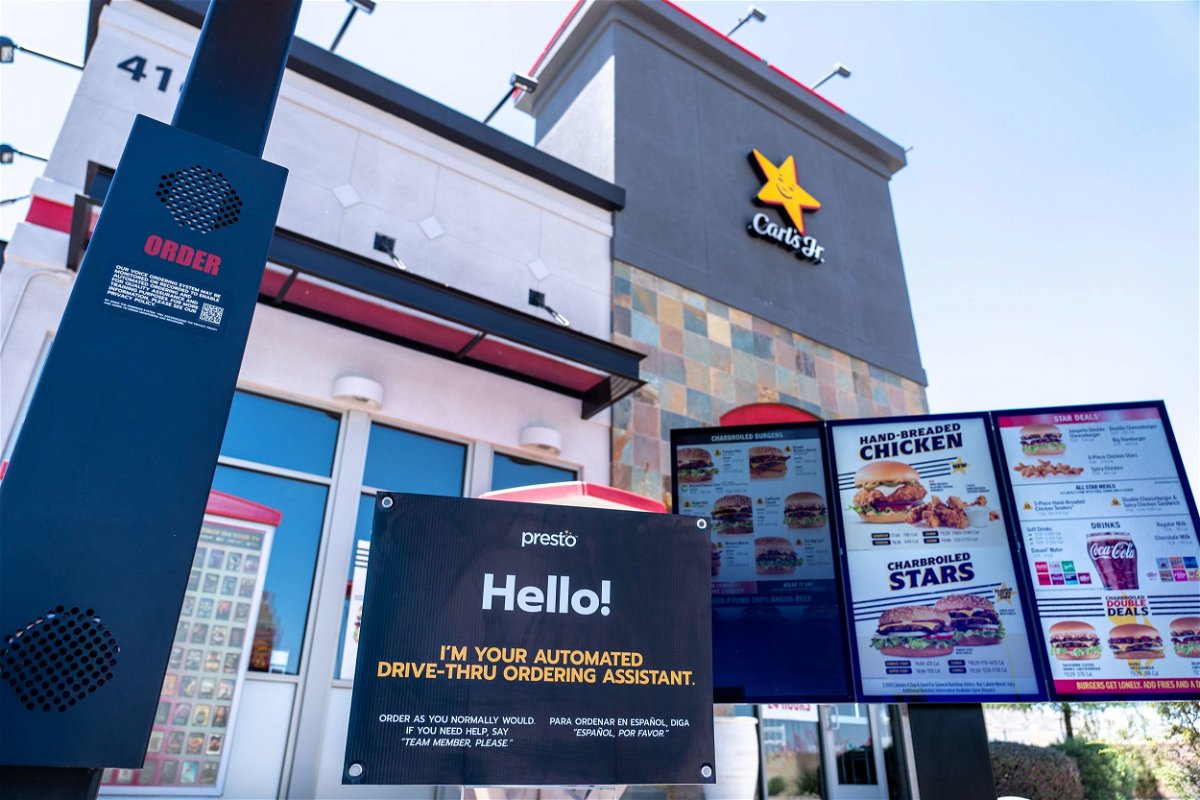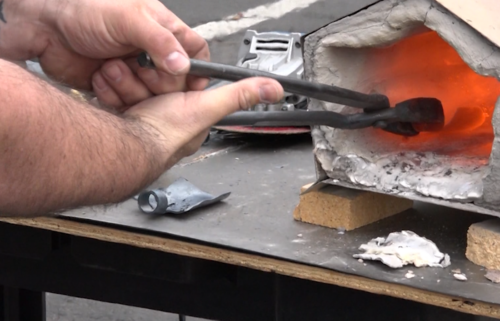AI drive-thrus may be good for business. But not for the rest of us

New AI technology at the drive-thru at a Carl's Jr. location.
By Danielle Wiener-Bronner, CNN
New York (CNN) — Over the past few years, restaurants from White Castle to Wendy’s have been investing in artificial intelligence tech for drive-thrus. They say it’s a way to ease the burden placed on overworked employees, and a solution to bogged down drive-thrus overwhelmed by a surge of customers.
But customers — and workers — may not be thrilled with the technology.
Frustrated customers have already documented cases of AI getting their orders wrong, and experts warn the noisy drive-thru is a challenging environment for the technology. And AI may swipe hours or even entire jobs away from fast-food workers.
But restaurants are forging ahead, buoyed by the promise of higher sales and faster drive-thrus, whether we like it or not.
A challenging environment
Some fast-food aficionados may not have noticed AI at their drive-thru lanes yet, but since about 2021 chains have been testing out AI tools like automated voice ordering, where an AI rather than a person takes your order at the drive-thru,.
These efforts have ramped up recently, with two announcements in May. CKE Restaurants (owner of Hardee’s and Carl’s Jr.) said it will roll out AI ordering capability more broadly after a successful pilot. Soon after, Wendy’s said it had expanded its partnership with Google Cloud to include an AI ordering tool at the drive-thru. The chain is piloting the program in Columbus, Ohio this month.
Even the suppliers of the tech note the challenges of a fast-food application: “You may think driving by and speaking into a drive-thru is an easy problem for AI, but it’s actually one of the hardest,” Thomas Kurian, CEO of Google Cloud, told the Wall Street Journal in reference to the collaboration.
Speech recognition technology “is really challenging,” said Christina McAllister, senior analyst at research agency Forrester, who studies the impact of using AI in call centers.
Accents can throw the system off, and “it doesn’t perform particularly well in noisy areas,” she noted. Shouting an order over a car full of kids arguing or friends laughing may confuse the technology and, in turn, annoy the customer.
“One of the things that frustrates customers the most is having to repeat themselves when they shouldn’t have to,” she said. Those customers may end up unleashing their anger at the next employee they see.
In real-world situations, reactions to AI drive-thrus are still mixed.
Out of ten orders placed by customers at an Indiana White Castle that uses AI in its drive-thru, three people asked to speak with a human employee, because of either an error or a desire to simply talk to a person, the Wall Street Journal recently reported.
That said, AI inherently improves as it collects more data. The experience may improve after tools take more orders and learn to better recognize voices.
For companies, a hiccup-y start seems to be well worth the potential boost to sales.
Would you like fries with that?
One of the main benefits of using AI in the drive-thru is that it upsells relentlessly — leading customers to spend more, according to Presto Automation, an AI company that works with restaurants and has partnered with CKE.
Presto Voice “upsells in every order,” interim CEO Krishna Gupta said during a May analyst call. “It results in higher check sizes.”
Customers, he reasoned, “want faster speed of service. They want better customer satisfaction and they want higher check sizes and they are getting it all with Presto Voice.”
It’s hard to believe that customers want to spend more — but restaurant operators certainly want them to. On its website, Presto describes “the perfect upsell” as one that may be tailored to the weather, time of day, the order itself or the customer’s order history.
Some analysts are similarly bullish. “We believe that AI voice recognition and digital only lanes could speed up the average drive through service time by at least 20-30%,” analysts wrote in a Bernstein Research note published in March. “We expect AI to augment the competitive advantages of restaurants with digital culture.”
Short-staffed restaurants may see AI as a way to fill in the gaps. While restaurants and bars have been adding jobs in recent months, employment in the leisure and hospitality sector was down by 349,000 in May compared to February 2020. Some restaurants are still struggling to find staff.
Meanwhile, dining trends have changed. The pandemic sent customers to drive-thrus in droves and some have kept the habit, contributing to slower drive-thru times.
At Wendy’s, the “slowest point in the whole drive-thru is that order station,” CEO Todd Penegor said on an analyst call.
With the AI, Wendy’s is “trying to make our lives a little bit better for our employees and a heck of a lot better for our customers,” Penegor added. Instead of taking orders, he said, workers can focus on making food and sending it out more quickly.
The adoption of new technology could mean fewer jobs or part-time work for employees, said Yong Suk Lee, assistant professor of technology, economy and global affairs at the University of Notre Dame, where he focuses on AI’s impact on labor.
“It’s a labor-cutting exercise,” he said, adding that from his perspective, “it’s directly replacing workers.”
Ultimately, customers may end up missing a human touch — even if it slows them down.
In a survey last year Chick-fil-A, along with Carl’s Jr., nabbed the top spot for satisfaction with service. Yet Chick-fil-A failed to make the top five for order accuracy, according to the 2022 annual drive-thru survey by Intouch Insight and QSR magazine that tracks drive-thru experiences at hundreds of locations across ten major chains.
How did the chicken chain manage to stay beloved despite the order screwups? With the help of a system it refers to as face-to-face ordering, in which employees walk down the line of cars to take orders with a tablet.
For now, it remains to be seen what customers actually want.
“There aren’t enough at-scale examples of voice AI in action, especially in this use case,” to say that people would prefer AI to an employee, said McAllister.
By the time those examples exist, AI in drive-thrus may already be the norm.
The-CNN-Wire
™ & © 2023 Cable News Network, Inc., a Warner Bros. Discovery Company. All rights reserved.



